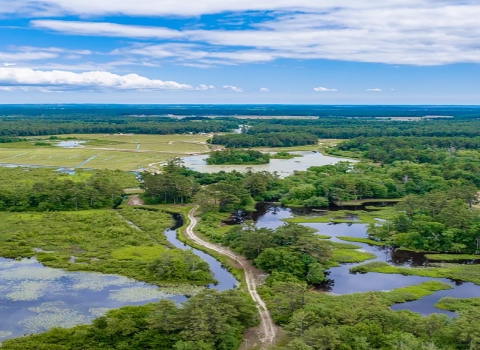Once common across much of the eastern and upper midwestern U.S., populations have declined due to habitat loss, pesticide use, disease and climate change climate change
Climate change includes both global warming driven by human-induced emissions of greenhouse gases and the resulting large-scale shifts in weather patterns. Though there have been previous periods of climatic change, since the mid-20th century humans have had an unprecedented impact on Earth's climate system and caused change on a global scale.
Learn more about climate change .
BLOOMINGTON, Minn. - The U.S. Fish and Wildlife Service proposes to designate approximately 1.6 million acres of occupied critical habitat across 33 counties in Illinois, Iowa, Minnesota, Virginia, West Virginia and Wisconsin for the endangered rusty patched bumble bee under the Endangered Species Act. Most of the proposed critical habitat designation is on private land within urban areas. If finalized, the critical habitat designation will not affect activities by private landowners unless the activity is funded or authorized by a federal agency.
Since the rusty patched bumblebee’s listing in 2017, the Service has been consulting on projects funded or authorized by a federal agency in areas of occupied habitat. The proposed critical habitat consists entirely of occupied habitat and will have minimal impacts on additional consultation needs.
The ESA requires the Service to designate critical habitat for listed species based on the best scientific data available. Designation of critical habitat does not affect land ownership, establish a refuge, or preserve. Federal agencies are required to consult with the Service to ensure that any actions they fund, authorize, or carry out do not destroy or harm critical habitat. However, when the habitat is occupied by the species, like in the case of the rusty patched bumble bee, agencies are already taking steps to avoid jeopardizing the species and its habitat. Therefore, little additional conservation effort is usually needed beyond what is already in place.
Rusty patched bumble bees are found primarily in urban and suburban areas in the Midwest including greater metropolitan areas such as Minneapolis and St. Paul, Minnesota; Chicago, Illinois; Iowa City, Iowa; and Milwaukee, Wisconsin.
The rusty patched bumble bee was listed as endangered in 2017, making it the first bumble bee to receive federal protection. It has a mostly yellow upper body with a black spot resembling a thumb tack between its wings. They get their name from a patch of rusty-colored hairs, surrounded by yellow hairs, that appear on the second abdominal segment of male and female worker bees. Queens are entirely yellow on the first two abdominal segments and do not have the rusty patch.
Similar to other native bumble bees, the rusty patched bumble bee needs nectar from a variety of flowers from early spring through fall, nesting habitat and overwintering habitat for the next year’s queens. Reproductive males and new queens are produced later in the summer and fall and then disperse and mate. Only the newly produced queens survive the winter to start the annual life cycle again when they emerge from overwintering sites to start new colonies in the spring.
Historically, the rusty patched bumble bee was widely distributed across its range. Before listing in 2017, the species experienced a widespread and abrupt decline. Evidence suggests a synergistic interaction between an introduced pathogen and pesticide exposure (specifically, insecticides and fungicides) contributed to the declines. Additional threats to the species include habitat loss and degradation, small population dynamics, and the effects of climate change.
The Service collaborates with Tribes, federal, and state agencies, academic institutions, and non-governmental organizations to fund and carry out conservation efforts for the rusty patched bumble bee. Many partners across the bee's range are involved in surveys, monitoring and habitat improvements. Much of this work takes place on private lands with the support of local landowners. Recovery research efforts focus on studying harmful pathogens, genetic challenges of small populations, pesticide effects and habitat management strategies.
The proposed rule will publish in the Federal Register on Tuesday, November 26, 2024, opening a 60-day public day comment period. The Service will accept comments received or postmarked before January 27, 2025. The proposal, supporting materials and information on how to submit comments are found at www.regulations.gov by searching under docket number FWS-R3-ES-2024-0132. For more information, please see our frequently asked questions.



